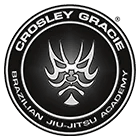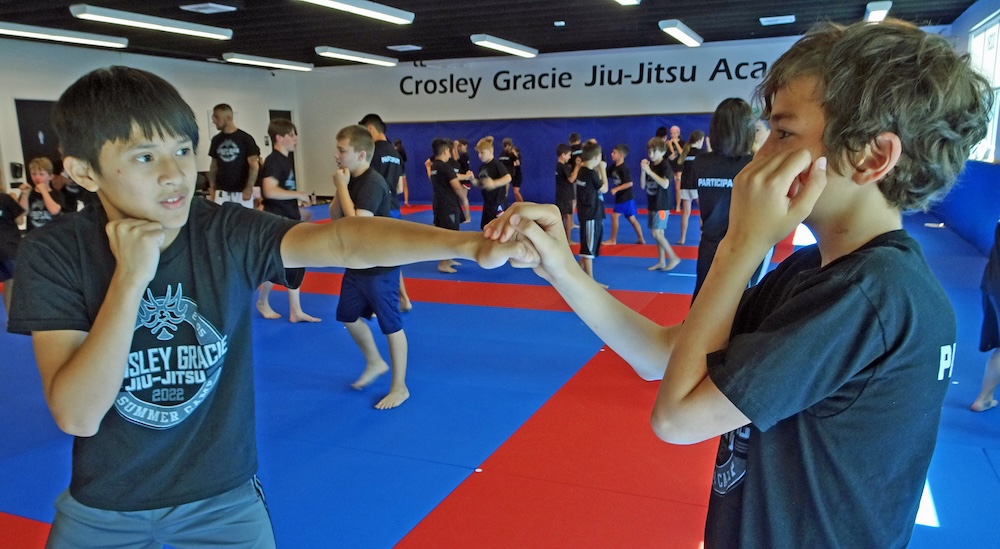Our Kids Jiu-Jitsu classes in Brentwood will give your child the highest degree of confidence
Our Youth Jiu-Jitsu Program, structured into five distinct classes, is designed to foster essential life skills that extend far beyond the mat.
Through consistent, focused instruction, our students develop respect, discipline, dedication, humility, focus, and a strong work ethic, equipping them with the values necessary for personal growth and long-term success in all areas of life.
At Crosley Gracie Jiu-Jitsu, students in our youth program develop technical proficiency both in their progression through the ranks and in real-world self-defense. Confident in their ability to protect themselves, they are empowered to navigate school, their neighborhood, and other environments without fear. As they grow, they become physically and morally prepared to face life's challenges, evolving into responsible adults who are ready to contribute positively to society.
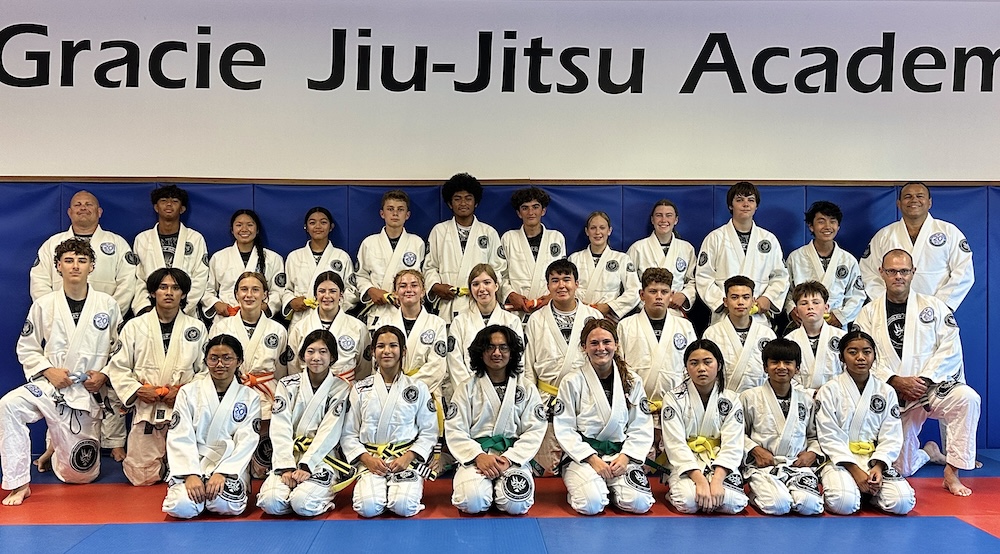
At Crosley Gracie Jiu-Jitsu, We Teach Modern And Realistic Self-Defense Training
It is essential to recognize that not all martial arts and self-defense systems are created equal. Many self-defense programs focus primarily on striking techniques, such as punching and kicking, while others rely on katas or prearranged movements performed with cooperative partners or in solo practice. These methods can often provide children with a misleading sense of confidence, as they lack the realistic, practical application needed for effective self-defense.
In our program, students acquire real combat skills by practicing with resisting partners who counter with their own techniques. From day one, every activity is designed to prepare them for sparring. Through sparring with other children, they embark on a profound journey of self-discovery.
Along the way, they will gain insight into their strengths and weaknesses, learn how to cope with disappointment when physically challenged, and develop resilience without falling into a victim mentality. As students build the confidence of truly knowing their abilities and limitations, they will carry themselves with greater poise and assurance.
This sense of security, stemming from a solid and effective plan of action in the face of potential threats, empowers them to find non-physical solutions to conflicts, preserving their peace and safety.
Develop personality, character, and awaken a sense of responsibility in your child
We train our students to carry themselves with honor and confidence, equipping them with the skills to resolve confrontations through verbal assertiveness. However, if a situation escalates to physical conflict, they are prepared to control and defend themselves effectively, without causing harm to their aggressor.
A key distinction of Gracie Jiu-Jitsu, compared to many other martial arts, is the ability to neutralize an opponent without relying on strikes. The confidence gained from consistent training also empowers our students to intervene when they witness bullying, standing up for others constructively and responsibly.
Bullying and The Rules of Engagement
Bullying can have a profound impact on a child's mental well-being, academic performance, and physical health, often leading to long-term social difficulties. Children who are bullied are more likely to suffer from low self-esteem, increased rates of depression, loneliness, anxiety, and even suicidal thoughts. Additionally, they tend to avoid school more frequently, resulting in higher rates of absenteeism.
In our Youth Programs, we regularly hold discussions and workshops on the psychology of bullying. These sessions encourage students to share personal experiences and equip them with practical strategies and training to develop an immediate plan of action if they ever become a target.
We teach our students to be verbally assertive and to speak with confidence, whether they are addressing peers or adults.
Each year, before the start of the school year, we host a "Bullying & Rules of Engagement" seminar, open to the public. To stay informed about future seminars, you can join our mailing list here.
While our program is effective in addressing the bullying epidemic, only those who commit to consistent training will naturally develop the confidence to stand up for themselves, act assertively, and, if necessary, defend themselves physically when confronted.
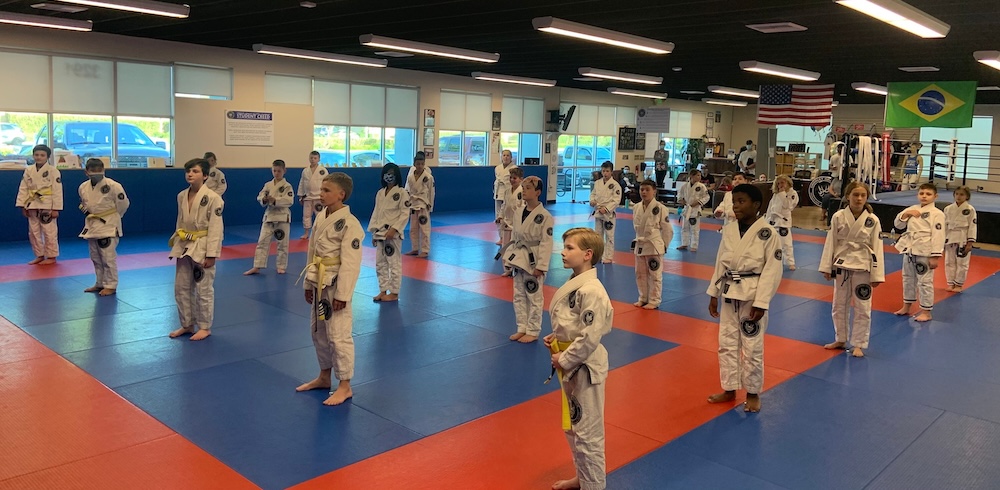
Improve Your Child's Motor Skills And Turn Them Into A Successful Athlete
One of the key aspects of our programs is the integration of world-class athletic training into our classes. Jiu-Jitsu serves as an exceptional cross-training activity for athletes across various sports. The work ethic, accountability, fine motor skills, and natural agility our students develop through our unique teaching methods translate seamlessly into other athletic disciplines. However, this benefit is reserved for those who commit fully to their training.
As a lifelong competitor, starting at the age of 12 and advancing to become a professional athlete competing at the highest levels, Professor Crosley Gracie has had the privilege of training with and learning from world-class coaches and instructors. This wealth of experience enables us to implement advanced training methods that help our students identify their physical strengths and weaknesses, guiding them toward becoming the best possible athletes they can be.
In addition to regularly emphasizing the importance of supplementary training for athletic development and competition, we also dedicate time to discussing with our youth team the significance of maintaining a healthy, balanced diet to enhance performance and promote overall well-being.
Click here for the most Frequently Asked Questions about our programs.
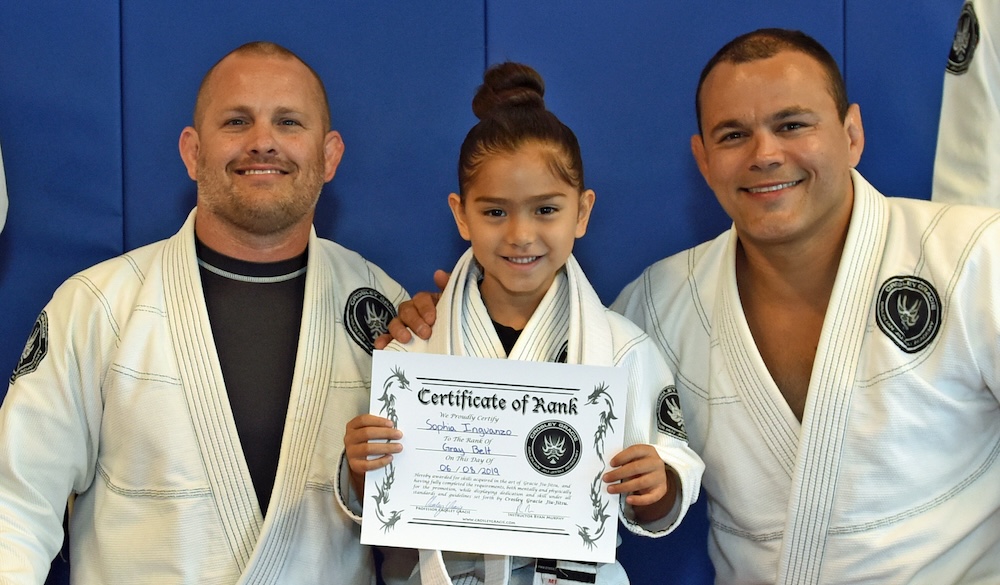
Ready to Give Your Child the Ultimate Advantage?
Our program has helped countless children overcome bullying, excel in athletics, and grow into responsible adults ready to contribute positively to society.
Crosley Gracie Jiu-Jitsu is an appointment-only facility. Please fill out the form below to request an appointment:
Kids Jiu-Jitsu F.A.Q.
How old does my child need to be to start?
Most children are ready by age 4.
What is the difference between Brazilian Jiu-Jitsu and other forms of martial arts for kids?
Jiu-Jitsu teaches children that they don’t need to rely on punching or kicking to defend themselves against bullying. Instead of practicing prearranged movements or katas on a cooperative partner, they learn to apply practical grappling techniques against resisting partners. Through strategic grips, leverage, and positioning, kids gain real-world self-defense skills while developing confidence, problem-solving, and control.
How large are your classes? What’s the instructor-to-student ratio?
Youth class sizes may range between 25–30 students per class. As classes grow, we add instructors to maintain a 1:10–12 ratio. Regardless of size, students are consistently taught respect, focus, and discipline to thrive in a structured environment.
My child is very energetic. Will Jiu-Jitsu encourage aggression?
No, just the opposite. Training channels energy in a positive way. Our program emphasizes respect, discipline, and self-control. Kids learn Jiu-Jitsu is a tool for growth, not aggression. Many once-aggressive children become calmer and more respectful.
What if my child isn’t athletic?
Jiu-Jitsu is great for kids who may not enjoy team sports. Every child progresses at their own pace. Instructors value effort over speed, and children often discover strengths they didn’t know they had—building confidence and self-esteem.
Is the curriculum safe?
Yes. While Jiu-Jitsu involves contact, we enforce strict safety rules and etiquette. Injuries are rare due to proper technique, close supervision, and a disciplined environment.
Can girls train too?
Absolutely! Girls gain the same skills and confidence as boys. Many of our female students are just as tough—sometimes tougher! Your daughter will be safe, supported, and respected.
Why choose Crosley Gracie Jiu-Jitsu over other martial arts schools?
We focus on value beyond technique. We encourage families to research and compare. Read more about what sets us apart here.
How are classes structured?
All youth classes include: Warm-up (drills for coordination and strength), Technique Drilling (step-by-step skill instruction), and Sparring (safe partner practice). This structure builds confidence and real self-defense ability.
Will my child enjoy it and stay committed?
Yes! Our classes are strict but fun. Kids enjoy the challenge, and long-term consistency is reinforced by both instructors and parents. Our retention rate is one of the highest in youth martial arts.
What commitment is required to see progress?
Just two classes a week can bring results in skill, focus, and attitude. For busy schedules, private lessons help accelerate learning.
How much does membership cost?
We offer multiple programs and flexible payment options. The best way to get an accurate quote is to schedule a free in-person consultation.
Are there additional training fees?
Additional costs include required gear like uniforms (gi), rash guards, and belts at promotion time. Optional camps, seminars, or private lessons are also available.
Why do you require a 12-month agreement?
Real growth takes time. A 12-month commitment ensures students have time to adjust, build trust, and grow in skill and character.
What if I’m unsure about committing for 12 months?
Think about your goals—lasting confidence and discipline take time. If unsure, observe a class or try a trial session before deciding.
